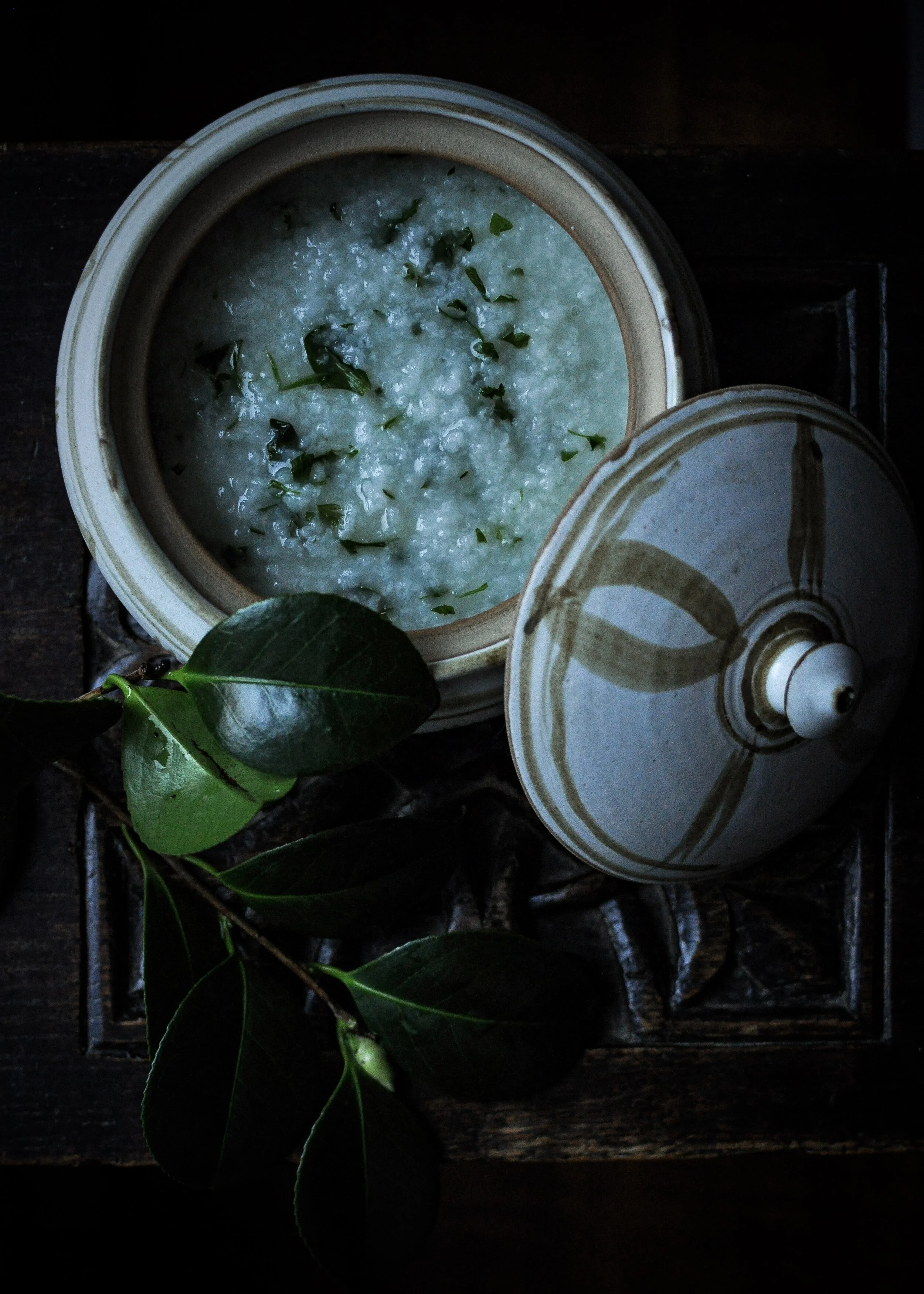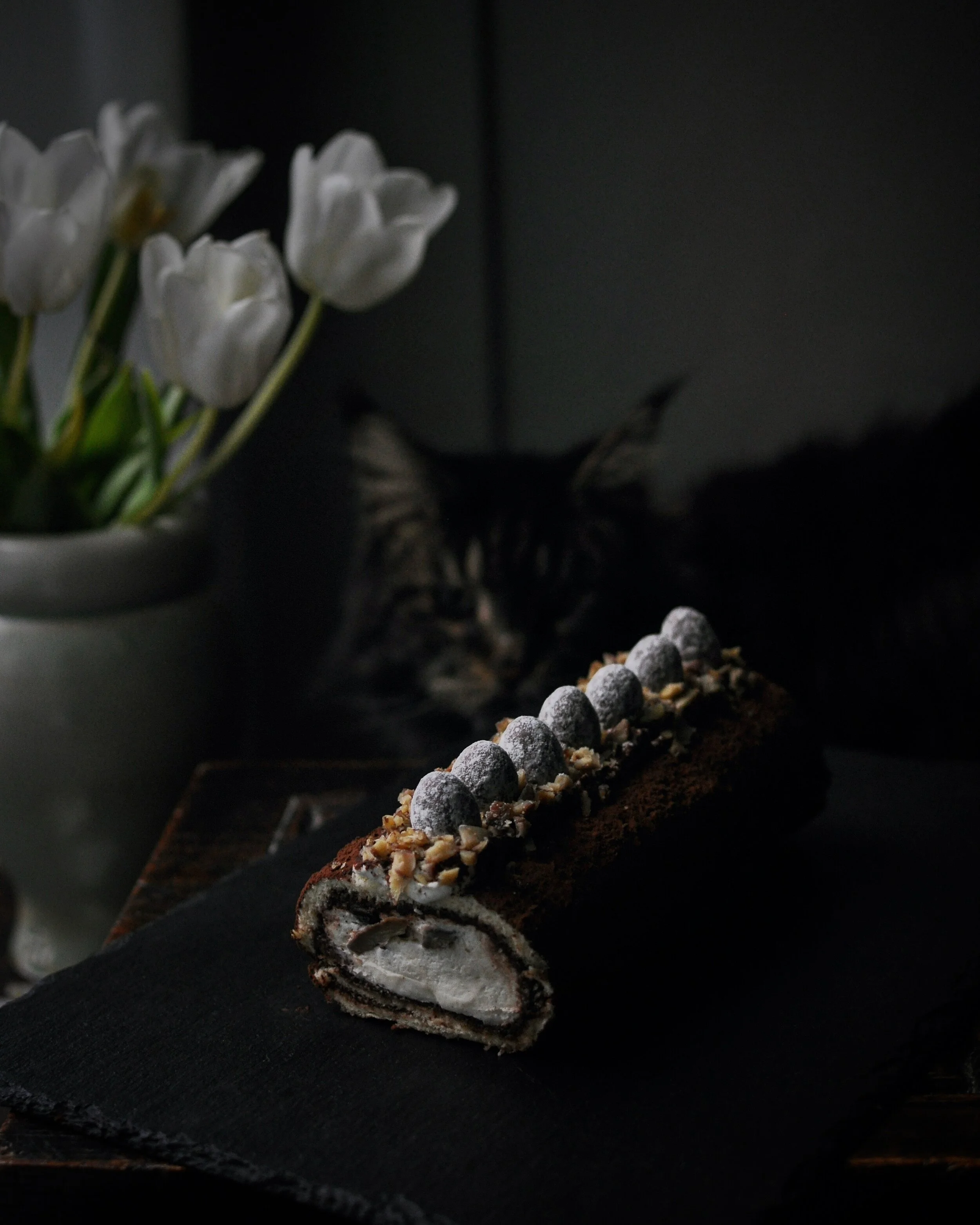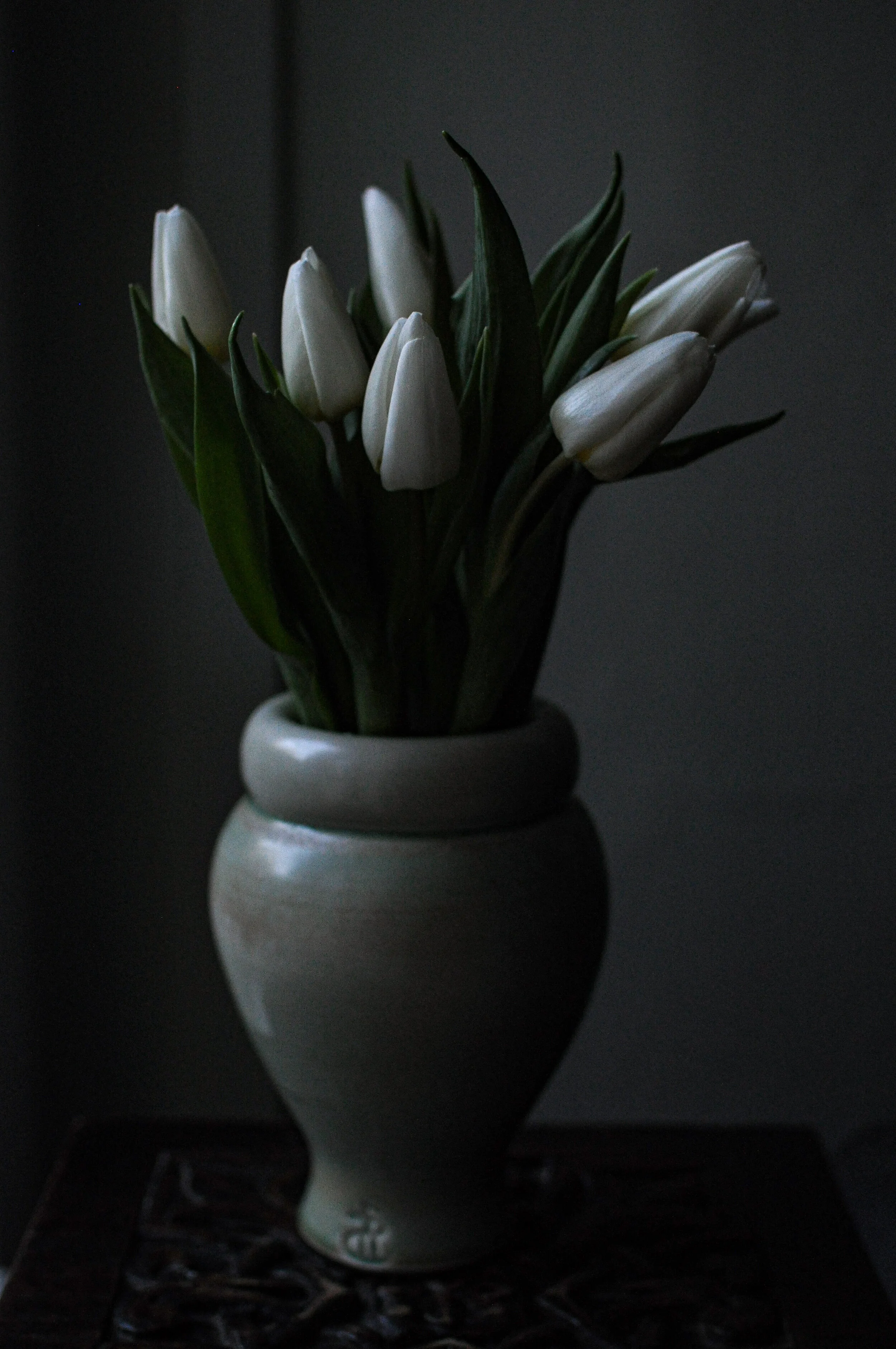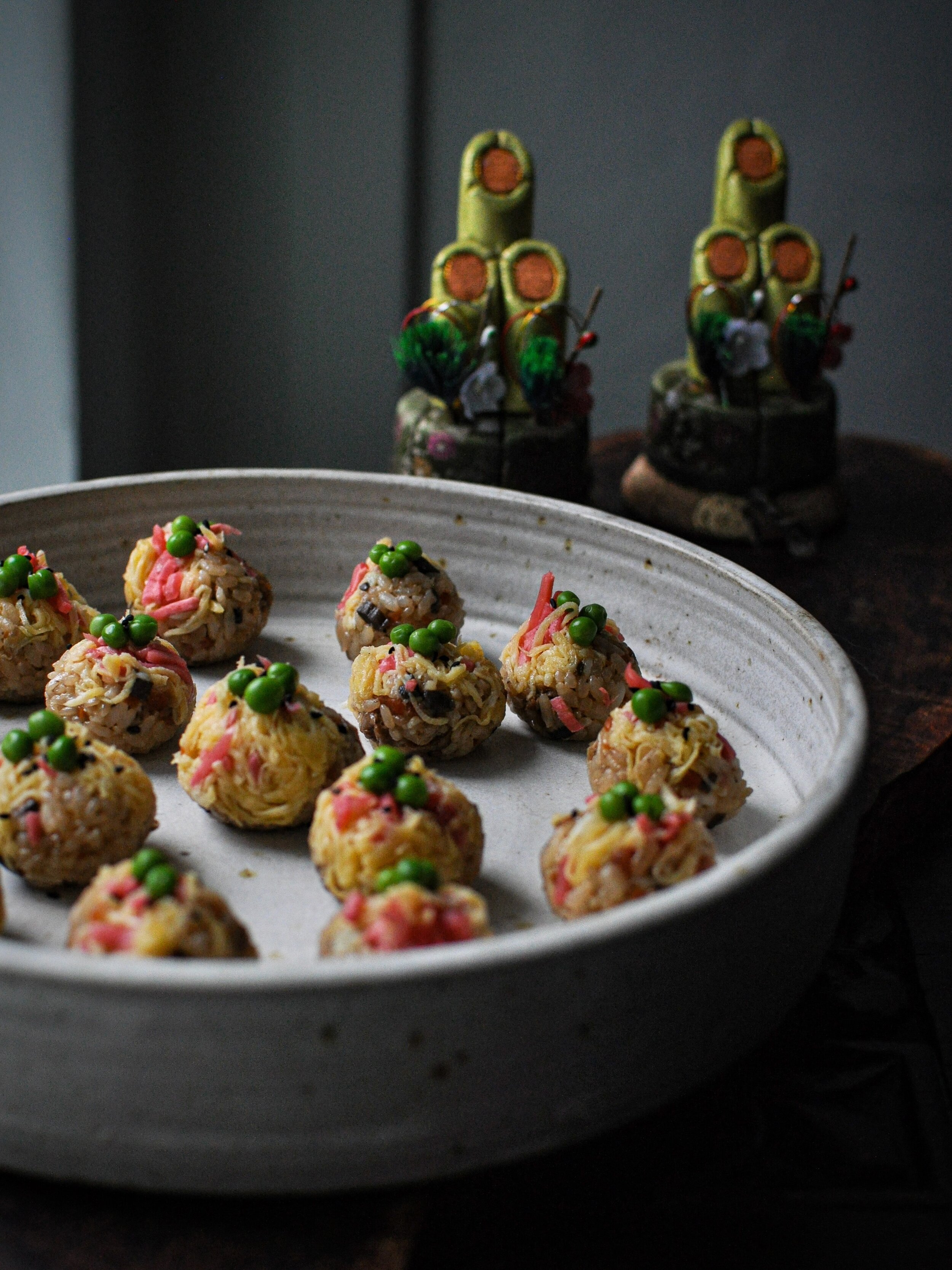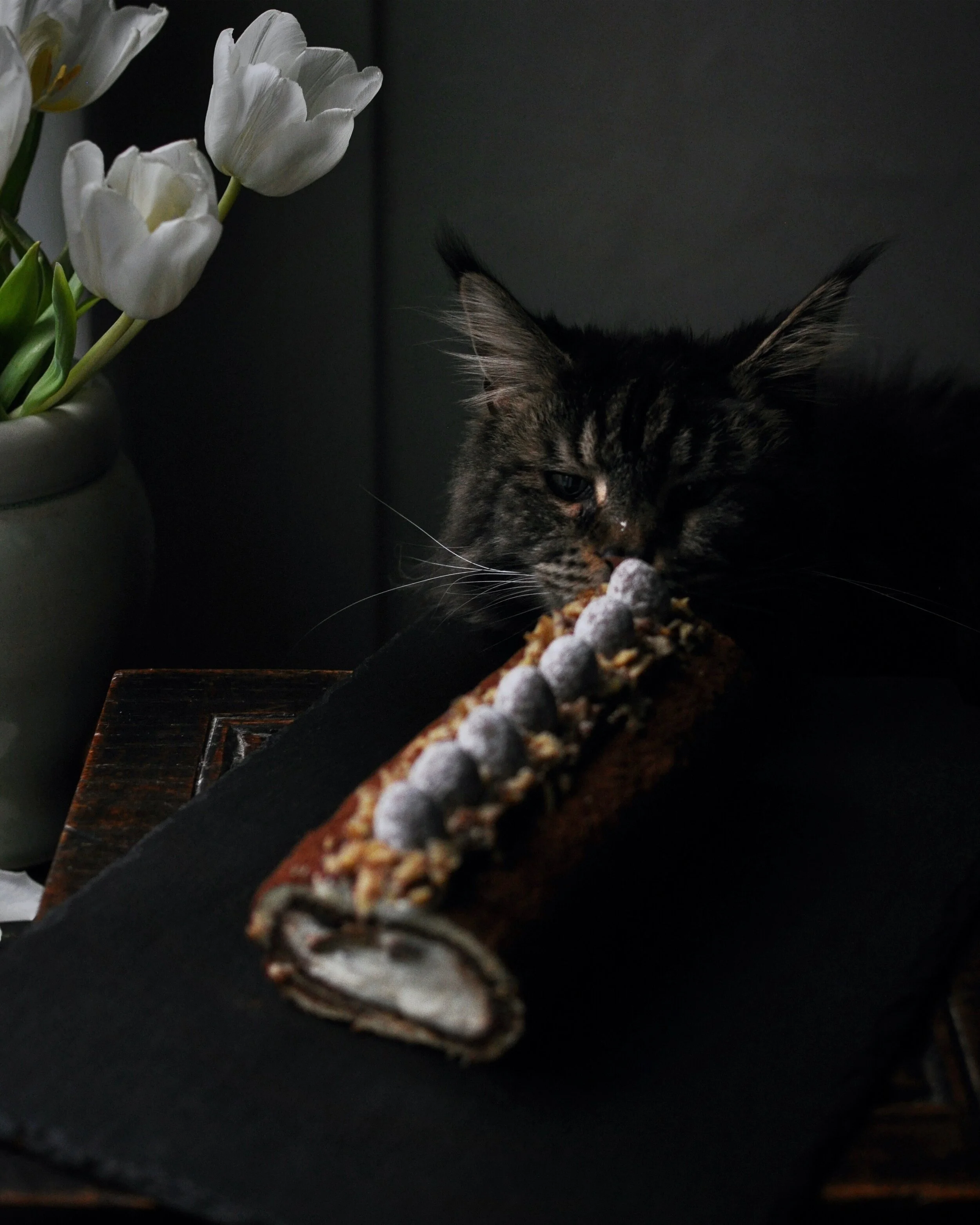Seven-Herb Porridge
24 Seasons [ Shokan Lesser Cold ]
二十四節気 [ 小 寒 ]
Hello, everyone! I hope you’ve all been well and had a good start to the New Year. We’ve had a few cold days and quite a lot of rain recently in Wales. I can’t believe it’s already mid January!
皆様こんにちは。お元気ですか?順調な新年のスタート発進をされましたか?結構寒い日もあれば沢山雨の降っているウェールズですが、気づけば既に一月半ば過ぎ!!
In Japan, we have many traditional New Year dishes called Osechi. Each Osechi is a good-luck symbol wishing for a healthy great new year. I made Temari-zushi, a type of sushi, a twisted version of Chirashi-zushi. It is not a typical Osechi but does contain Goshiki, the five colours:red (ginger and carrots), yellow (eggs), green (green peas), black (mushroom and black sesame), and white (rice and tofu). Goshiki is one of the essentials of Japanese cuisine along with Goho (the five cooking methods), Gomi (the five tastes), and Gokan (the five senses). The beautiful bowl is from fantastic local ceramist Ryland Pottery. I’ll make traditional Osechi dishes next year!!
元日は恒例の手毬寿司。残念ながら去年のクリスマスイベントでは会えませんでしたが、毎年クラフトフェアで一緒になる地元の陶芸家、ライランドポタリー、グリン作の大皿にのせて。来年こそは、おせち料理を作ります!!
My mother sent us her handmade traditional Japanese New Year decorations called Kadomatsu. They are usually placed in pairs in front of homes during the New Year season. This Kadomatsu has a Sho-chiku-bai design, one of the traditional auspicious groups of pine, bamboo and plum blossoms. Normally they are made from fresh plants, these are a miniature craft called Kimekomi. They are made of wood and the fabric is applied over it and the edges tucked into the cuts of the base.
木目込み人形を習っている東京の母が、松竹梅のミニチュア門松を送ってくれました。
In the first seven days of the month, lots of birthdays in our family. One is my husband, Chris’ so I made an amaretto infused chestnut and chocolate rolled cake. It looked rather Christmassy but it was a birthday cake – Mochi wanted to try some too.
我が家は年明け最初の1週間に、お誕生日が目白押し。パートナーのクリスの誕生日にアマレット風味の栗とチョコレートのロールケーキを焼きました。クリスマスっぽいですが、バースデーケーキ。餅は真剣にチューリップを眺めているふりをしながら、鼻の頭に既にクリームが 。。。
The Japanese Tradition #8 [ Seven-herb Porridge ]
日本の伝統 #8 [ 七草粥 ]
We have a traditional custom where we eat rice porridge made with seven herbs in the morning on the 7th of January. This tradition comes from a 7th century Chinese legend. In Japan it’s called the Festival of Seven Herbs and is one of the five annual ceremonies traditionally held at the Imperial Court.
Wishing for good health, we take the vital nutritional power from the wild plants into our body. It also wards off evil and helps to rest our stomach after the festive New Year meals.
The seven traditional herbs are Japanese parsley, shepherd's purse, cudweed, chickweed, nipplewort, turnip and radish but I just used mixed herb leaves and radish. It’s totally delicious topped with sea salt and some drizzled sesame oil. After eating this piping hot shiny porridge, you feel purified for the New Year.
The lovely bowl is from Robyn Cove Pottery .
そして今年は、七草粥も作りました。7世紀の中国の伝説に由来すると言われる七草の節句の七草粥。せり、なずな、ごぎょう、はこべら、ほとけのざ、すずな(蕪)、すずしろ(大根)という日本の春の七草の代わりにスーパーで売られているハーブミックスとラディッシュの赤い部分を除いて、炊いてみました。
真っ白いお粥にハーブの緑が綺麗。出来上がった熱々のお粥を見ていると、それだけで神聖な気持ちになるから不思議です。体の中へ清い食べ物を取り入れるという感覚を、毎日の食事の際にも常に感じる様にしたいもの。ハーブの若々しい強い生命力を体の中へ取込み、滋養をつけて邪気を祓う他に、お正月に食べ過ぎの疲れた胃腸を休めるという意味合いもあるそう。皆さんも召し上がりましたか?
写真の器は、地元陶芸家のお友達、ロビンコーヴポタリー、ロビンの作品。
INGREDIENTS ( serves two )
Japanese rice:80 grams ( available at most big supermarkets )
Water:600 mil
Sea salt:some pinches
Mixed herbs
Sesame / chilli oil (optional)
RICE
1. Wash the rice a few times by gently rubbing with hands until the water looks clear then drain.
2. Put the rice and water in a pan and leave it over night or at least 30 minutes.
3. Cover the rice and cook over high heat then turn it down to lowest heat as soon as you see the water boiling. Stir it gently before you put the lid back.
4. Cook for 30 minutes. Occasionally check the pan to stop boiling over.
5. Sprinkle some sea salt to taste before eating.
HERBS
1. Wash and chop the mixed herbs. 10 minutes before the rice is cooked, sprinkle pinch of salt over the leaves and leave for 5 minutes.
2. Squeeze the excess water from the leaves.
3. Add the leaves to the rice and cook for a few minutes.
*TIP1:Before you wash the rice, spread it on a plate. Get rid of any defective rice; you will see that some grains are opaque, not transparent. This treatment makes a world of difference to the taste of rice.
*TIP2:Prepare only green coloured herbs. If you want some radish, peel the red part then slice it. Add it to the rice with other herbs.
This Japanese Nanakusa Seven-Herb Porridge is a ceremonial, a kind of ritual dish, so we value the colours as each colour symbolizes good luck. White is for purity and green is good health. That’s why we remove the red part from the radish and the green liquid from the salted herbs so that we can keep the rice pure white.
*TIP3:In order to keep the porridge piping hot, warm the bowl before serving. Be careful not to burn your tongue as I did!!
*TIP4:The porridge can be served with some drizzled sesame oil or chilli oil to add some richness to the rice but this is not very traditional. Chopped ginger is also a great option to add in the winter.
*TIP5:If available, you can add some 1.5cm size diced mochi rice cake to the porridge when you cook rice – superb!!
https://www.japancentre.com/en/products/823-sato-shokuhin-mochi-rice-cakes
According to some local tales, the seven-herb rice porridge is prepared the night before by patting the herbs with camellia branches so this year I cut some camellia from our garden to prepare it and I’m going to make some chopsticks with the camellia branches later.
一説によれば、七草粥は前日の夜、椿の枝で七草を叩いて準備するのだとか。その為にカットした庭の椿で、手作り箸を作ってみようかと思います。
Sunset sky on Epiphany, Cardiff
